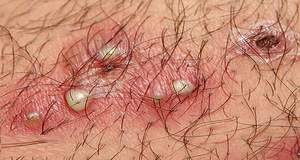Ovarian cysts Overview
The ovaries are two small organs located on either side of the uterus in a woman’s body. They make hormones, including estrogen, which trigger menstruation. Every month, the ovaries release a tiny egg. The egg makes its way down the fallopian tube to potentially be fertilized. This cycle of egg release is called ovulation.
What are the different types of ovarian cysts?
The most common types of ovarian cysts (called functional cysts) form during the menstrual cycle. They are usually benign (not cancerous).
The two most common types of cysts are:
- Follicle cysts. In a normal menstrual cycle, the ovaries release an egg each month. The egg grows inside a tiny sac called a follicle. When the egg matures, the follicle breaks open to release the egg. Follicle cysts form when the follicle doesn’t break open to release the egg. This causes the follicle to continue growing into a cyst. Follicle cysts often have no symptoms and go away in one to three months.
- Corpus luteum cysts. Once the follicle breaks open and releases the egg, the empty follicle sac shrinks into a mass of cells called corpus luteum. Corpus luteum makes hormones to prepare for the next egg for the next menstrual cycle. Corpus luteum cysts form if the sac doesn’t shrink. Instead, the sac reseals itself after the egg is released, and then fluid builds up inside. Most corpus luteum cysts go away after a few weeks. But, they can grow to almost four inches wide. They also may bleed or twist the ovary and cause pain. Some medicines used to cause ovulation can raise the risk of getting these cysts.
Other types of benign ovarian cysts are less common:
- Endometriomas are caused by endometriosis. Endometriosis happens when the lining of the uterus (womb) grows outside of the uterus.
- Dermoids come from cells present from birth and do not usually cause symptoms.
- Cystadenomas are filled with watery fluid and can sometimes grow large.
In some women, the ovaries make many small cysts. This is called polycystic ovary syndrome (PCOS). PCOS can cause problems with the ovaries and with getting pregnant.
Malignant (cancerous) cysts are rare. They are more common in older women. Cancerous cysts are ovarian cancer. For this reason, ovarian cysts should be checked by your doctor. Most ovarian cysts are not cancerous.
Ovarian Cysts Causes
The following are risk factors for developing ovarian cysts:
- History of previous ovarian cysts
- Irregular menstrual cycles
- Increased upper body fat distribution
- Early menstruation (11 years or younger)
- Infertility
- Infertility treatment with gonadotropin medications
- Hypothyroidism
- Tamoxifen (Soltamox) therapy for breast cancer
- Cigarette smoking also increases the risk of functional ovarian cysts.
Oral contraceptive/birth control pill use decreases the risk of developing ovarian cysts because they prevent the ovaries from producing eggs during ovulation.
What symptoms are caused by ovarian cysts?
Most ovarian cysts are never noticed and resolve without women ever realizing that they are there. When a cyst causes symptoms, pain in the abdomen or pelvis is the most common one. The pain can be caused from:
- rupture of the cyst,
- rapid growth and stretching,
- bleeding into the cyst, or
- twisting of the cyst around its blood supply (known as torsion).
If the cyst has reached a large size, other symptoms may arise as a result of pressure or distortion of adjacent anatomical structures. These symptoms can include abdominal fullness or bloating, indigestion, feeling full after eating only a small amount (early satiety), urinary urgency, feeling an urge to defecate or having difficult bowel movements, or pain with sexual intercourse.
How is an ovarian cyst diagnosed?
As most ovarian cysts cause no symptoms, many cysts are diagnosed by chance – for example, during a routine examination, or if you have an ultrasound scan for another reason.
If you have symptoms suggestive of an ovarian cyst, your doctor may examine your abdomen and perform an internal (vaginal) examination. He or she may be able to feel an abnormal swelling which may be a cyst.
An ultrasound scan can confirm an ovarian cyst. An ultrasound scan is a safe and painless test which uses sound waves to create images of organs and structures inside your body. The probe of the scanner may be placed on your tummy (abdomen) to scan the ovaries. A small probe is also often placed inside your vagina to scan your ovaries, to obtain more detailed images.
Your doctor may also take samples of your blood and urine. Some women may have other tests – for example, a CT or MRI scan.
Ovarian Cyst Complications
Most ovarian cysts are benign and naturally go away on their own without treatment. These cysts cause little, if any, symptoms. But in a rare case, your doctor may detect a cancerous cystic ovarian mass during a routine examination.
Ovarian torsion is another rare complication of ovarian cysts. This is when a large cyst causes an ovary to twist or move from its original position. Blood supply to the ovary is cut off, and if not treated, it can cause damage or death to the ovarian tissue. Although uncommon, ovarian torsion accounts for nearly 3 percent of emergency gynecological surgeries.
Ruptured cysts, which are also rare, can cause intense pain and internal bleeding. This complication increases your risk of an infection and can be life-threatening if left untreated.
What are the risks of ovarian cysts during pregnancy?
Ovarian cysts are sometimes discovered during pregnancy. In most cases, they are an incidental finding at the time of routine prenatal ultrasound screening. The majority of ovarian cysts found during pregnancy are benign conditions that do not require surgical intervention. However, surgery may be indicated if there is a suspicion of malignancy, if an acute complication such as rupture or torsion (twisting of the cyst, disrupting the blood supply) develops, or if the size of the cyst is likely to present problems with the pregnancy.
What is the treatment for ovarian cysts?
Your specialist will advise on the best course of action. This depends on factors such as:
- Your age.
- Whether you are past the menopause.
- The appearance and size of your cyst from the ultrasound scan.
- Whether you have any symptoms.


















